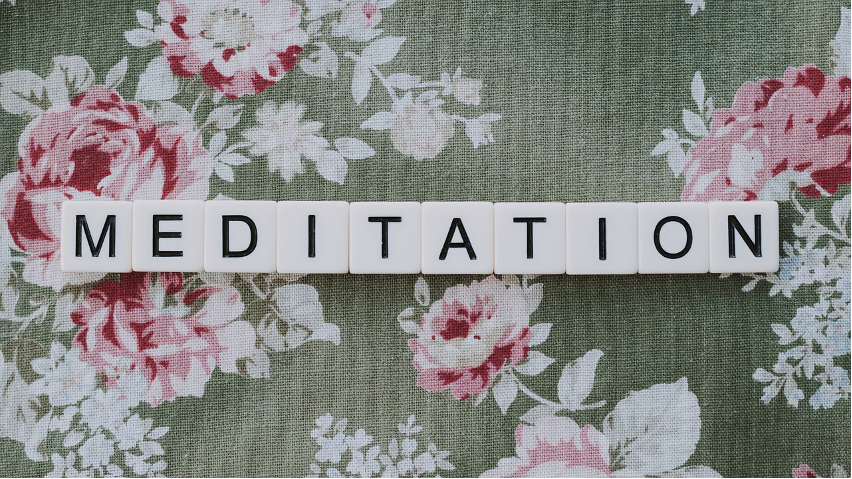What is Mindfulness?
Mindfulness involves paying attention to the present moment, without judgment. It is about observing thoughts, emotions, and sensations as they arise, accepting them as they are, rather than reacting to them.
For centuries, meditation has been a spiritual pursuit. Recently, mindfulness has emerged as a practical tool to reduce stress and enhance overall health. Research has shown that regular mindfulness practice can decrease anxiety, improve mood, and enhance overall mental clarity.1
This simple yet profound practice helps reduce mental clutter and allows individuals to respond more calmly to stressors.
The Role of Meditation
Meditation is a broader practice that often includes mindfulness as one of its techniques. Through focused breathing, visualization, or mantra repetition, meditation helps quiet the mind, fostering a sense of inner peace and relaxation. Over time, meditation rewires the brain, improving emotional regulation and promoting a greater sense of well-being. Studies have linked meditation to lower levels of stress, improved concentration, and enhanced emotional health.2
Benefits for Mental Well-being
- Stress Reduction: Mindfulness and meditation help break the cycle of stress by promoting relaxation and reducing the physiological effects of stress on the body.
- Improved Focus: These practices enhance concentration and cognitive function by training the mind to stay present and avoid distractions.
- Emotional Resilience: Regular practice fosters emotional stability, helping individuals respond more thoughtfully to challenging emotions like anger, frustration, or sadness.
- Better Sleep: Mindfulness and meditation help quiet the mind, making it easier to fall asleep and improve the quality of rest.
- Enhanced Self-Awareness: By tuning into your thoughts and emotions, mindfulness fosters a deeper understanding of oneself, leading to personal growth and better decision-making.
Types of Meditation

1. Mindfulness Meditation
Mindfulness meditation is the most widely practiced type of meditation. This technique involves paying attention to the present moment without judgment. it is about observing your thoughts, feelings, and sensations without getting caught up in them.
Begin by finding a comfortable seated position and focusing your attention on your breath. Observe the sensations of your breath as it enters and exits your body. When your mind wanders, gently guide it back to your breath. You can also use other sensory experiences, such as smell, sound, or taste, as a focal point for your meditation.
2. Focused-Attention Meditation
This meditative practice involves focusing on a single object of attention, such as a mantra, visualization, or sound.
You can begin by selecting a mantra (a word or phrase) and repeating it silently to yourself. When your mind wanders, gently guide your attention back to the mantra
3. Open-Monitoring Meditation
This meditative practice involves being present with whatever arises in your experience without focusing on a particular object. It is about observing your thoughts, feelings, and sensations without judgment or reaction.
Find a comfortable spot, sit, and observe whatever arises in your awareness. Notice your thoughts, feelings, and sensations without trying to change or control them.
4. Loving-Kindness Meditation
Through this meditative practice, we aim to cultivate a state of compassion, empathy, and loving-kindness. By focusing on these emotions, we can retrain our minds to be more receptive to their positive influence.
Start by wishing yourself well. Then, extend these feelings to loved ones, acquaintances, and even those you find challenging.
5. Walking Meditation
This involves practicing mindfulness while walking. it is about paying attention to the sensations of walking, such as the movement of your feet, the feeling of the ground beneath you, and the rhythm of your breath.
Take a slow walk and focus on the sensations of your body as you move. Notice the feeling of your feet touching the ground, the movement of your arms, and the rhythm of your breath.
6. Guided Meditation
This involves listening to a recorded meditation or following the instructions of a meditation teacher. Guided meditations can be helpful for beginners or those who find it difficult to focus on their own.
Find a guided meditation on a topic that interests you, such as stress reduction or improving sleep. Listen to the recording and follow the instructions.
Getting Started
Mindfulness and meditation are accessible to anyone, regardless of experience. You can start with just a few minutes a day, focusing on your breath, or observing your thoughts and feelings without judgment. There are numerous resources, including guided meditations, apps, and classes, that can help you integrate these practices into your routine.
Conclusion
Incorporating mindfulness and meditation into your life can lead to lasting improvements in mental well-being. These practices not only help manage stress but also foster emotional balance, greater focus, and a deeper sense of peace. Whether you’re new to mindfulness or looking to deepen your practice, investing time in these techniques is a step toward a healthier mind and a more fulfilling life
SOURCES:
- “Mindfulness meditation: A research-proven way to reduce stress.†American Psychological Association, 30 October 2019, https://www.apa.org/topics/mindfulness/meditation.
- Jamil, Aneeque. “Meditation and Its Mental and Physical Health Benefits in 2023.†NCBI, 19 June 2023, https://www.ncbi.nlm.nih.gov/pmc/articles/PMC10355843/.




